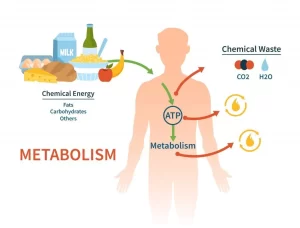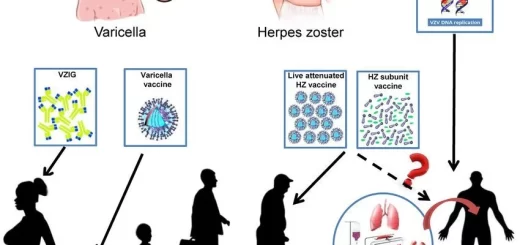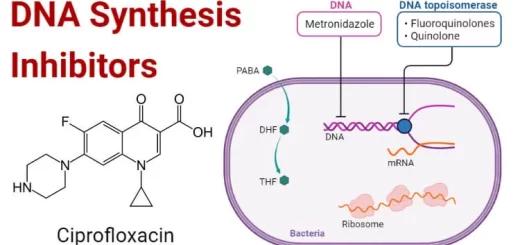Uses of oxygen debt, Factors affecting Metabolic rate and SDA of food
Metabolism provides your body with energy for essential body functions such as breathing and digestion, Your body needs a minimum number of calories (the basal metabolic rate or BMR) to sustain these functions, Factors such as age, sex, muscle mass, and physical activity affect metabolism or BMR.
Factors affecting the metabolic rate
1. Muscular exercise. It is the most important factor affecting the metabolic rate.
Maximal muscular exercise can increase the metabolic rate up to 20 folds in trained athletes. Oxygen consumption and the metabolic rate are increased not only during exertion but also for some time after the end of the exercise to repay the oxygen debt. Metabolic systems that supply energy for muscle contraction. They differ according to the intensity of the exercise, its duration and the type of diet eaten by the person (high carbohydrate, mixed diet, or high-fat diet).
1. Phosphagen system (ATP and Creatine phosphate)
It can provide maximal muscle power for 8 to 10 seconds. It is almost enough for the 100-meter run or running a 50-meter dash jumping, weight lifting, diving, and football dashes.
- ATP is the basic source of energy for muscle contraction, However, its amount in the muscle is sufficient to sustain maximal muscle power for about 3 seconds only, Therefore, new ATP must be formed continuously. ATP → ADP → AMP
- After that, creatine phosphate decomposes to creatine, phosphate, and large amounts of energy, which is used to reform ATP. Energy transfer from Cr P to ATP occurs within a small fraction of a second.
CrP + ADP ↔ ATP + Creatiine
Cr P is 3-8 times as abundant as ATP and the amount of energy obtained from hydrolysis of Cr P (13Kcal/mole) is more than the energy required to form ATP from ADP (12Kcal/mole).
2. The glycogen lactic acid system
It is used when large amounts of ATP are required for short to moderate periods of muscle contraction as during 100 meters swim and a 400-meter dash. It can provide 1.3 to 1.6 minutes of maximal muscle activity in addition to the 8 to 10 seconds provided by the phosphagen system but with reduced muscle power.
However, it is about one-half as rapid as the phosphagen system. The glycogen stored in the contracting skeletal muscles splits into glucose, undergoes anaerobic glycolysis, and splits into 2 pyruvic acid molecules. Then most of the pyruvic acid is converted into lactic acid with the formation of amounts of ATP.
3. The aerobic system
The energy to perform long-term exercise comes primarily from the aerobic system as running a marathon and jogging. In the presence of oxygen, pyruvic acid is completely oxidized in the mitochondria and gives more ATP molecules. In addition, different foodstuffs (glucose, but most importantly fatty acids) are also In oxidized in the mitochondria, to release tremendous amounts of energy, used to reform ATP. Although the aerobic system is slower than the other 2 systems, it enables the muscle to contract for an unlimited time, as long as nutrients last (such as fat).
Oxygen debt
Oxygen debt is the extra consumption of oxygen after the completion of severe exercise. After a period of hard exercise, a person continues to breathe hard and to consume large amounts of oxygen for at least a few minutes and sometimes for as long as 1 hour after it.
Uses of the oxygen debt
This additional oxygen is used to:
- Reconvert lactic acid that accumulated during exercise, back into glucose.
- Reconstitute the phosphagen system (convert AMP, and ADP into ATP as well as creatine and phosphate into creatine phosphate).
- Re-establish the normal stored oxygen bound with haemoglobin, myoglobin and raise the concentration of oxygen in the lungs and body fluids to its normal level.
Oxygen debt = oxygen consumption during recovery (after exercise until the basal consumption is reached) – Oxygen consumption during an equal period of rest.
2. Recent ingestion of food (Specific dynamic action of food= SDA)
The SDA of food is the obligatory energy expenditure that occurs during the assimilation of food into the body. It may last up to 6 hours after food intake. Its exact cause is not certain. However, several theories may explain it:
- Increased sympathetic system activity following food intake.
- Metabolic reactions in the liver:
- The SDA of proteins may be due to the deamination of amino acids in the liver or from a stimulatory effect of some amino acids on cellular chemical processes.
- The SDA of fats may be due to direct stimulation of metabolism by the liberated fatty acids.
- The SDA of carbohydrates may be a manifestation of the extra energy required to form glycogen.
Factors affecting the SDA of food
1. Type of food. An amount of proteins sufficient to provide 100 Kcal increases the metabolic rate of a total of 30 Kcal. A similar amount of calories of carbohydrate origin increases it 6 Kcal and of fat 4 Kcal.
2. Amount of food. Because proteins have the highest SDA, the greater the proteins ingested, the more the increase in the metabolic rate. The heat liberated as a result of SDA is generated above that produced by the BMR and work and is derived from the energy stores of the body.
Example: if the daily energy requirement of an individual is 3000 Kcal and this amount is supplied by proteins only, the metabolic rate would increase by 900 Kcal (3000 x 30/100). So, the energy output will be 3900Kcal and not 3000Kcal. This excess heat is derived from the energy stores of the body, thus, prolonged protein ingestion would lead to loss of body weight.
3. Environmental temperature: When the environmental temperature is lower than the body temperature, the metabolic rate increases due to the activation of heat-producing mechanisms such as shivering. Persons living in cold climates have higher metabolic rates than those living in hot climates partially due to increased thyroxin secretion.
In hot weather, the metabolic rate decreases due to decreased body activities. However, if the environmental temperature is high enough to raise the body temperature, the metabolic rate also rises due to the acceleration of metabolic processes.
4. Fever Regardless of its cause, fever increases the metabolic rate because it increases cellular chemical reactions. For each degree of fever, the metabolic rate increases by about 14 % of the basal level.
5. Stimulation of the sympathetic nervous system increases the metabolic rate due to:
- Liberation of epinephrine and norepinephrine which have a direct effect on muscles and liver, to cause glycogenolysis, and increase cellular activity.
- Marked liberation of heat from a certain type of fatty tissue called brown fat, present in considerable amounts in newborn children. In these cells, upon sympathetic stimulation, oxidative phosphorylation is uncoupled with the production of ATP i.e, almost all the energy is released as heat and the metabolic rate of the newborn is increased by more than 100%. In adults, the effect is less than 15%.
6. Sleep: The metabolic rate falls to 15% below normal during sleep due to:
- Decreased muscle tone.
- Decreased activity of the sympathetic nervous system.
7. Age: the metabolic rate of a young child in relation to his size is greater than that of an old person. This results from high rates of cellular reactions including those needed for growth.
8. Sex: the metabolic rate is slightly higher in males than in females of all ages. This difference is due to the stimulatory effect of male sex hormones on metabolism, the lesser amount of fat (which has a low metabolic activity), and the higher amount of skeletal muscle (which has a high metabolic rate) in males.
9. Hormones:
- Sex hormones.
- Thyroid hormones. They increase the rate of activity of all the chemical reactions in all cells of the body. Thus, the metabolic rate may rise to as high as 100% above normal under maximal thyroid gland secretion.
- Growth hormone. It increases the metabolic rate as a result of direct stimulation of cellular metabolism.
10. Malnutrition and prolonged starvation. Prolonged malnutrition can decrease the metabolic rate as much as 30 % due to a deficiency of necessary food substances in the cells. Prolonged starvation, and decreased metabolic rate is attributed to the depression of the sympathetic nervous system, decreased catecholamine levels, and a fall in the biologically active thyroid hormone. This explains why an individual reduces weight, the loss is initially rapid then slows down.
11. Emotional state. Anxiety and tension elevate the metabolic rate due to increased levels of epinephrine and tensing muscles, while depression decreases the metabolic rate.
12. Pregnancy and lactation: both increase the metabolic rate.
13. Height, weight, and body surface area.
Factors affecting the basal metabolic rate are those affecting the metabolic rate in general except for those interfering with the basal conditions such as during muscle exercise, food ingestion and environmental temperature.
You can download Science Online application on Google Play from this link: Science online Apps on Google Play
Metabolism, Energy balance, Basal metabolic rate & Factors affecting respiratory exchange ratio
Functions of Kidneys, Role of Kidney in glucose homeostasis, Lipid & protein metabolism
Mechanisms of cardiac reserve, cardiac work and oxygen consumption by the heart
Factors affecting cardiac output, Stroke volume, Heart rate & blood pressure




